Managing Disc Bulge: Effective Strategies for Pain Relief
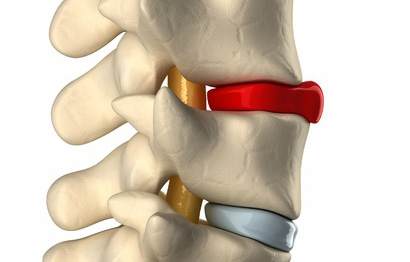
Do you have a disc bulge that is causing you incredible pain in your lower back?
Does your disc bulge give you sciatica or pain down your leg?
Have you wondered what’s going on in your lower back to cause all this pain?
In this issue of Bodi Empowerment, I go over what’s going on with your disc bulge, the cause of your pain and what kind of treatments are best for you. In other words, I act as a guide to help you decide what to do.
Disc herniations, or disc bulges occur when the disc that is found between vertebrae in the spine is damaged. Most of the time the damage occurs in stages.
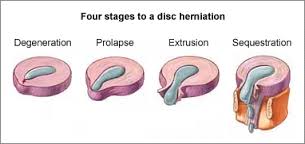
Here are the four stages of a disc herniation or disc bulge:
- Disc Bulge
- Disc Prolapse
- Disc Extrusion
- Disc Sequestration
Think of the disc as a flat hard onion with strawberry jelly inside. The jelly is the nucleus while the onion layers form circular layers of hard cartilage called the annulus.
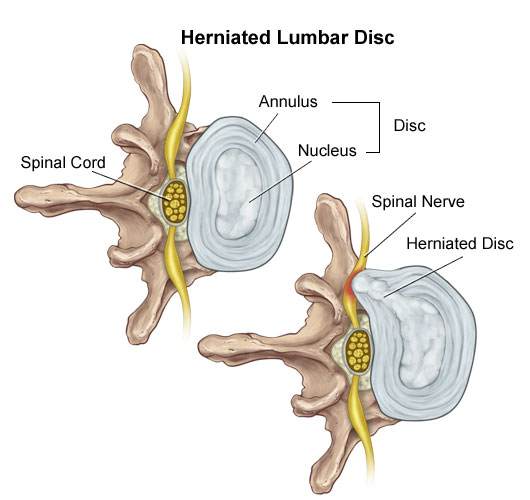
Disc Bulge
If you were to damage the annulus (onion) enough the disc gets to a point that when you bend forward, you pinch the front of the onion so it starts to bulge the onion at the back by pushing the nucleus (jelly) backwards.
This is called a disc bulge. For most of you, there is no pain but for some of you, there can be considerable lower back pain and even sciatica from this small disc bulge.
Disc Protrusion
A disc protrusion is like a disc bulge that comes out even more in one focused spot. The disc pushes out as if you had your finger inside a balloon and pushed out.
Most of the layers of the onion (annulus) have been damaged but the jelly (nucleus) is under considerable pressure. The jelly (nucleus) squeezes through the layers of the annulus (onion) with the few intact layers of the onion (annulus) and the PLL (posterior longitudinal ligament) holding the jelly from spilling out. The disc is still contained by the annulus and PLL ligament. ie the balloon hasn’t popped.
Disc Protrusions usually cause quite a bit of lower back pain and often times sciatica. Many of you, with disc protrusions, on the other hand, have absolutely no pain. There is no clear reason. A study found that 40% of people with no pain whatsoever had disc protrusion confirmed by MRI (Magnetic Resonance Imaging Machine) [1]
The trick is not to let your doctor diagnose you based on just an MRI. An MRI that shows a disc protrusion by itself is not a diagnosis. It’s what a normal person with no pain can have. Make sure there is other evidence!
Disc Extrusion
Disc Extrusion is a disc bulge so large that it breaks through the last layers of the onion (annulus) and the PLL ligament pushing into the area of the spinal cord. ie. The balloon has popped. If you have an extrusion you likely have a tremendous amount of pain leg pain and usually some lower back pain.
Surprisingly when a group of normal people with no pain were scanned with an MRI 18% were found to have disc extrusions (severe disc herniations). [1]
When you have a disc extrusion chances are the extrusion is likely causing your pain as it’s so large.
Disc Sequestration
Disc sequestration occurs when a piece of your jelly (nucleus) that breaks through the onion (annulus) and the PLL ligament has now broken off and moved away further into the spinal cord area. When you have a disc sequestration you have a tremendous amount of leg pain and some lower back pain.
Smaller Is Better: Disc Bulge
Disc Herniations or slipped discs are better if they are smaller, right? You will have less pain right? Yes except when they give you pain. Remember all those normal people with no pain with all kinds of slipped discs? They had disc bulges, disc protrusions, and disc extrusions and even disc sequestrations with no pain.
On the other hand, even with a small disc bulge, you can get a lot of pain and even sciatica with no pressure on the nerve. So smaller isn’t always better.
Bigger Is Better: Disc Bulge
Sometimes bigger is better. Most people like you with disc extrusion and sequestration have lots of pain. The fact is these painful extrusions while more painful usually shrink with time. It takes about a year but with the shrinking of the herniations, the pain does decrease.[2-5]
Disc Herniation: Disc Bulge Treatment
#1 Stop Aggravating Yourself
Half the problem why people don’t get better is that they continually aggravate their lower back and their slipped discs. Learning to lift properly, sit properly and even stand over the sink while brushing your teeth properly can help you avoid the pain.
Even Yoga exercises such as the downward dog can aggravate the lower back, Pilates and even your basic abdominal crunch have been shown by Dr Stuart McGill to increase the pressure in the disc beyond its safe limit.
If you want to find out how to stop aggravating your lower back, click the link below.
See Also: Slipped Discs: Best Self-Treatments To Help Your Lumbar Disc Herniation
#2 Exercise For Disc Herniations / Slipped Discs
For complete instructions on exercises for slipped discs click the link. Best Exercises For Your Slipped Disc
#3 Chiropractic Adjustments For Disc Bulge
A major research paper showed that people who have had lumbar disc herniations who have failed at least 3 months of medical management, including treatment with analgesics, lifestyle modification, physiotherapy, massage therapy, and/or acupuncture, should consider chiropractic spinal manipulative treatment, followed by surgery if unsuccessful. [6]
I would also add that I would try 3 different chiropractors as the competency level varies from person to person. Like any profession including medical doctors and physiotherapists, there are the good ones and bad ones.
See also: 6 Things You Should Look For In A Chiropractic Clinic
#4 Acupuncture For Disc Bulge
Acupuncture is helpful for Slipped Discs in the neck and the lower back.[7-8]
#5 Injections
In a study of two different groups getting treatment for lumbar disc herniations, the group getting chiropractic manipulation had 76.5% of the people improve while the group getting the nerve root injections improved by 62.7%.
After a month, the chiropractic spinal manipulation group had a 60% reduction in pain compared to the nerve root injection group, which had a 53% decrease in pain. Keep in mind the nerve root injection group seemed to be worse to start with compared to the spinal manipulation group.
See Also: Chiropractic Spinal Manipulation Vs. Nerve Root Injections for Lumbar Disc Herniations
Epidural injections are also helpful for lower back pain and the radiating pain down your leg.[8]
#6 Surgery
#1 Discectomy
There are two types of surgery available for slipped discs. Discectomy and spinal fusion. This surgery involves cutting out the piece of the disc that is protruding out and pushing on the spinal cord or nerve.
Discectomy is relatively simple compared to spinal fusion. You have a much better chance of success with discectomy if your MRI shows that your disc herniation is greater than 7 mm thick and correlates well with your neurological exam and nerve conduction studies.[9] If your lower back pain is greater than your leg pain discectomy will not likely work very well for you.[10]
#2 Spinal Fusion
Spinal Fusion removes the disc herniation, jelly (nucleus), and most of the annulus (onion). Bone from the pelvis is then transplanted where your disc was so that the two vertebrae become one.
What Treatment Should You Do?
You should do at least 3 months of therapy when you have a slipped disc before even considering surgery or injections. Start by not aggravating your lumbar disc. You need to modify how you bend forward, lift and even pick up your socks.
See Also: Disc Herniation: Best Self-Treatments To Help Your Lumbar Disc Herniation
If you have trouble sleeping at night you can take painkillers to help you get a better sleep. Don’t stay in bed though. When you have excruciating pain you should only have bed rest for a maximum of two days total.
Next, try chiropractic or physiotherapy with someone who also does acupuncture. Make sure it’s not with somebody who knows how to do 20 acupuncture points. Be patient with them as disc herniations can be difficult to deal with.
Attend regularly 3 times a week for at least a month. Make sure they change the treatments to find what works best for you. If they keep doing the same thing each visit but you are improving that is fine, but if you aren’t improving then it’s time to find a new chiropractor.
If you don’t get any better after a month change to a different chiropractor. I recommend trying 3 different chiropractors as different chiropractors have different training.
If you plateaued or haven’t improved at all then it’s time to get a nerve root injection or an epidural injection. Make sure it’s with a person that does this every day. An emergency room doctor or family physician only does this procedure once in a while. It’s better to get someone more experienced.
When conservative care has been completely exhausted then it’s time to consider surgery. Discectomy is more conservative than spinal fusion and recovery is much quicker. You should consider discectomy surgery if you have :
- Foot drop that is getting worse.
- Any other neurological symptoms that is getting worse like your reflexes, sensitivity
- Bowel or Bladder Symptoms (loss of your poo and pee function). : This is an emergency you should go to the hospital right away.
- If you have a disc protrusion or that is 8 mm or larger that correlates well with a neurological exam, and Nerve conduction tests.
- Leg pain is worse than your lower back pain.
Beware of the surgeon who wants to operate on a small disc bulge. There are too many unnecessary surgeries in the USA especially spinal fusion.
Spinal fusion is considered when your lower back pain is worse than your leg pain
Tell us what you think in the comments below and like us on Facebook. This Toronto Downtown Chiropractor will answer all questions in the comments section.
Research
1. Weishaupt D et al. “MRI of the lumbar spine: Prevalence of intervertebral disc extrusion and sequestration, nerve root compression and plate abnormalities, and osteoarthritis of the fact joints in Asymptomatic Volunteers.” Radiology – 1998; 209:661-666
2. Maigne JY, Rime B, Delignet B. Computed tomographic follow-up of 48 cases of nonoperatively treated lumbar intervertebral disc herniation. Spine 1992; 17:1071-1074.
3. Ikeda T, et al. Pathomechanism of spontaneous regression of the herniated lumbar disc: histologic and immunohistochemical study. J Spinal Disord 1996;9:136-140.
4. Ahn SH, Ahn MW, Byun WM. Effect of transligamentous extension of lumbar disc herniations and their regression in the clinical outcome of sciatica. Spine 2000; 25:475-480.
5. Komori H, Shinomiya K, Nakai O, et al. The natural history of herniated nucleus pulposus with radiculopathy. Spine 1996; 21:225-229.
Research
6. McMorland G et al.Manipulation or microdiskectomy for sciatica? A prospective randomized clinical study. Journal of Manipulative & Physiological Therapeutics 2010; 33: 576-584.
7. Wu, Yao-chi, Jun-feng Zhang, Yi-jun Sun, Cheng-fei Huang, Ping Shao, and Gui-zhen Liu. “Clinical study on electroacupuncture for cervical intervertebral disc herniation.” Journal of Acupuncture and Tuina Science 11, no. 6 (2013): 371-374. – See more at: http://www.healthcmi.com/Acupuncture-Continuing-Education-News/1249-acupuncture-found-superior-to-drug-for-neck-disc-pain#sthash.vD0pNepM.dpuf
8. Wang HeshanNon-Surgical Therapy For Prolapse of Lumbar Intervertebral Disc. The Journal of Traditional Chinese Medicine
9. Parr AT, Diwan S, Abdi S. Lumbar interlaminar epidural injections in managing chronic low back pain and lower extremity pain: a systematic review. Pain Physician 2009;12:163-188.
Research
10. Carragee EJ, et al “Clinical outcomes after lumbar discectomy for sciatica: The effects of fragment types and annular competence” J Bone Joint Surg Am – 2003; 85(1):102-108
11. McMorland G et al.Manipulation or microdiskectomy for sciatica? A prospective randomized clinical study. Journal of Manipulative & Physiological Therapeutics 2010; 33: 576-584.
Related Categories: Acupuncture, Back Pain, Disc Herniation, Imaging, Low Back Pain, Surgery
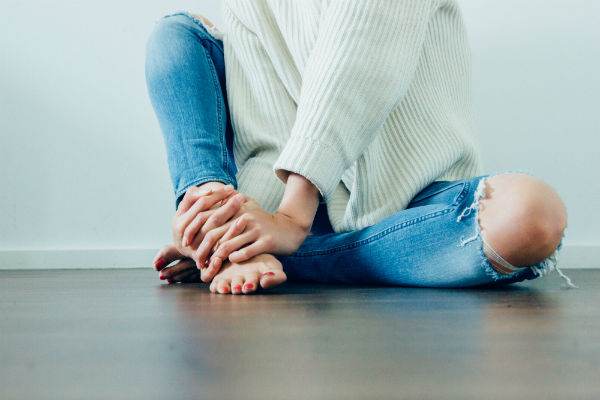
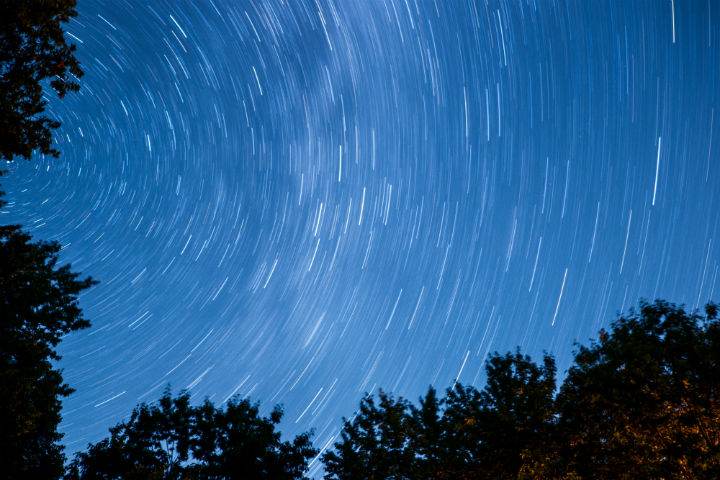
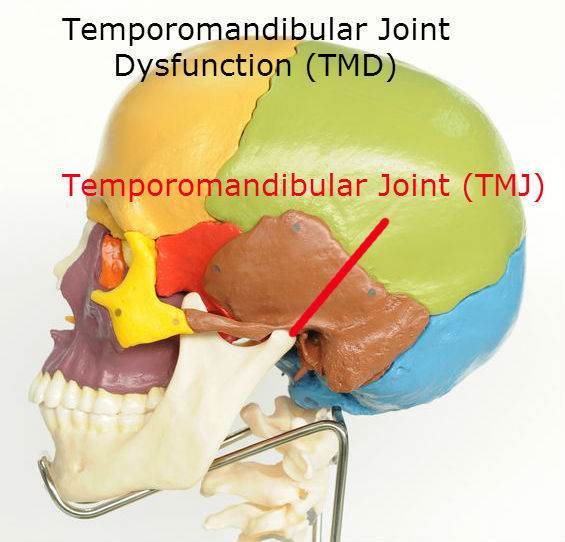

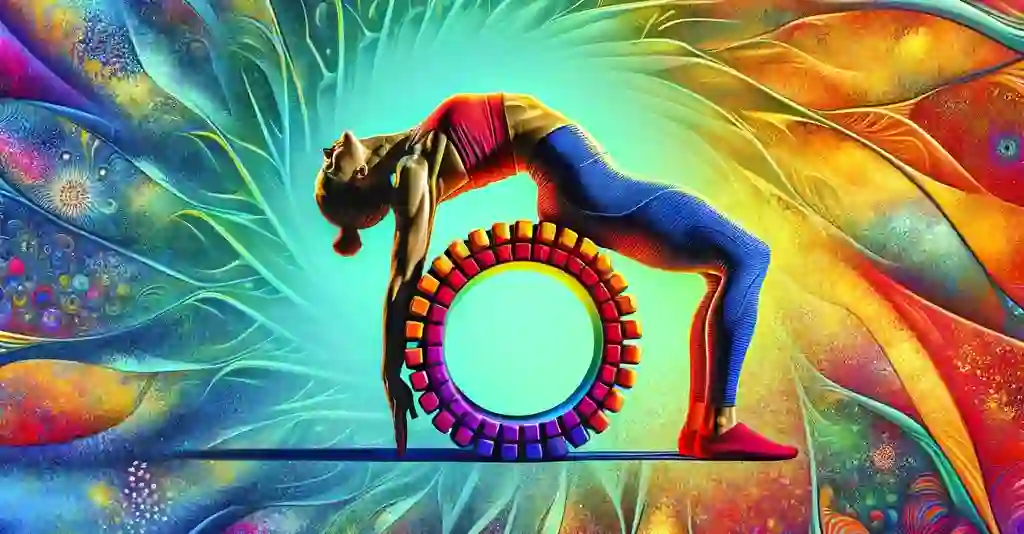
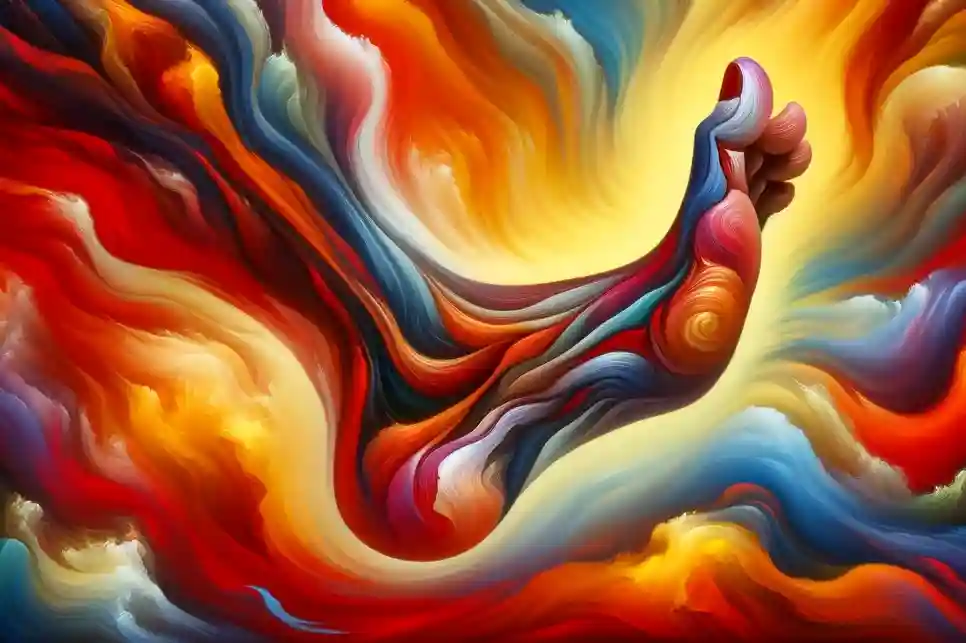
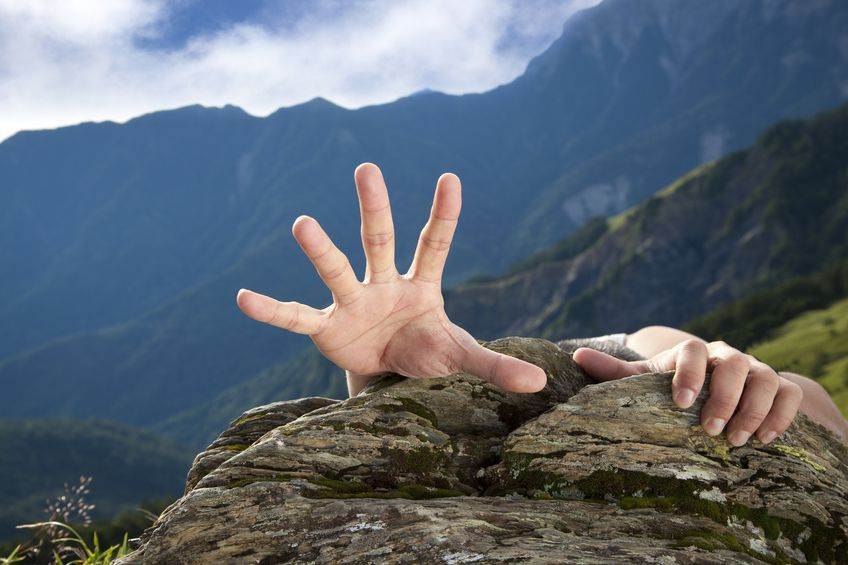
Hi Dr Ken,
My father 65 year old and unable to stand without support and walk properly for last five months after prostate surgery and his both legs thin day by day. I have no idea how he improved.
MRI Report – Diffuse disc bulge causing thecal sac compression and bilateral forminal nerve root compression seen at L4-L5 and L5-S1levels.
Ligamentum falvum and facetal hypertrophy seen at multiple levels causing bilateral lateral recess stenosis
I would really appreciate for your quick reply
Best Regards,
Raj Singh
Author
Thanks for your question Raj. The surgery could have caused damage or your father may have laid down for too long in the wrong position causing this back problem. However, the ligamentum flavum and facet hypertrophy will have little to nothing to do with the surgery and is most likely due to normal degeneration.
If the problem is due to the disc these exercises may help. https://www.bodiempowerment.com/herniated-disc-part-2-the-best-exercises-for-your-herniated-disc/
If the problem is due to another problem it will either get worse or have no effect.
Hope that helps your slipped disc. If you have any other questions I will be happy to answer them for you.
Dear Doctor Good Morning
I am 38 years old
In 2009 while playing volleyball ball my ankle sprained and that everything was fine but in winter my left left leg tibia fibula felt cold so I used much more herbal gels but not recovered. As per
X-ray of Lumbo Sacral Spine there was a muscle spasm
Now in 2017 I got MRI and as per MRI report”bulging disc at level LV4-5 and LV5-SV1 levels partial narrowing of both neural at LV4-5 level”
I think and feel my vein compress underside of thigh and towards back oftenly according to my sitting or standing position.
Plz tell me about it’s treatment
I shall be very thankful to u
Gold bless u
Best Regards
Hayat
Author
Thanks for your question Hayat. Your problem is more likely the nerve as there are nerve receptors specifically for temperature. I cannot tell you with certainty without an examination and history. You will need to see a professional that can examine you and take a proper history.
Hope that helps your slipped disc. The above is an opinion and not a recommendation.
Hi sir,
I am 27/male
Two years I had MRI SCANNING which says like this: Disc bulge seen at L5-S1 minimally intending anterior thecal sac.
The pain is like small amount shock passing through low back and left leg, I worried from 2 years , I am unable stand or site for long period.
please suggest me what kind of exercise I have do to reduce the pain.
Thanks,
Ravi P
Author
Thanks for your question Ravi. What have you been doing for 2 years? Assuming that your diagnosis is correct you can do these exercises. https://www.bodiempowerment.com/herniated-disc-part-2-the-best-exercises-for-your-herniated-disc/
Keep in mind that MRIs are not a diagnosis and a full history and exam is how to make a diagnosis. MRI often show disc herniations with people with no symptoms. So by no means, is your diagnosis certain. It is not possible to tell from what you have written. You would need to write in much more detail.
Hope that helps your possible disc bulge. If you have any other questions for this downtown Toronto chiropractor I will do my best to give you a helpful answer. The more details you put the more likely the answer will be customized to you. The above is an opinion and not a recommendation.
Good day Dr Ken
I am Kaneel, 33 year male from new delhi, india.
So while doing gym i felt a stretch around the lower back area and my movement was restricted. When i consulted a doctor, they told that it was a muscle sprain and gave me ibuprofen and paracetamol for few days. The movement restriction was sorted after a few days but i was feel a low of stretch around my lower back whenever reaching out for something or picking up something from down or while getting out of bed or standing after sitting on a chair etc. I then showed to an ortho who was specialist in sports injury. He gave me muscle relaxants for 5 days and said to do physiotherapy. After around 12-13 sessions of physio i felt only a slight change. Now the stretch is only felt on the left side and not on the right. But this has become after 2 sessions of physio, for the last 10-11 sessions there isn’t any difference. The doctor told me to go for an MRI. The MRI says
Lumbar vertebrae are normal in size, shape, alignment and signal intensity.
No significant degenrative disc changes noted
Mild diffuse disc bulge noted at L5-S1 with no neural compression.
Mild diffuse disc bulge noted at L4-L5 with minimal indentation over adjoining bilateral descending nerve roots
The problem is at the left side of the lower back. I don’t get any tingling, electric shock feeling, numbness etc in any of the legs/feet. Only i feel is stretch in the left outer tight and calf again only when i am standing up from a chair, getting of of bed etc as mentioned above. When i sit with cross legs also i feel a stretch in the whole body.
Now i have shown to a chiropractor and he says that this is because of the pelvic bone getting rotated and that has also caused the leg to become a little shorter. He lifted my legs to upto 60-70 degrees and there was no pain. I can bend down and touch my feet but only when i lift something or reaching and lift something i feel the stretch.
What i want to know is that can all what the chiro has said can that be the cause of this discomfort? And also as per the MRI diagnosis, is everything fine with the spine and discs etc?
I am really troubled because i hv to travel around 25-30 kms to these people and still the amount of relief is not upto my liking plus the money that it is getting spent is also wasted if there is no relief.
Thanks in advance
Author
Thanks for your question Kaneel. Wow from my opinion that’s a lot of treatment for a stretch like feeling. Why don’t you do these exercises here. https://www.bodiempowerment.com/herniated-disc-part-2-the-best-exercises-for-your-herniated-disc/
Hope that helps your lower back pain. If you have any questions for this downtown Toronto chiropractor I will do my best to give you a good opinion.
Dear Dr Ken,
Thank you for the time and energy you spend sharing your expertise here.
I’ve noticed a trend here where medical imaging results in the absence of actual symptoms hinder your ability to help, so I will give as much detail as I can. My apologies if it is long winded.
Having never suffered from back or back related problems in the past, and being in good health otherwise too, I woke up approximately 8 weeks ago with pain radiating down the front of my left thigh. There was no traumatic event associated with symptom onset, nor any previous spinal injury.
The pain is alleviated by me bending forwards at the waist, lifting my left leg, or sitting down leaning forwards (the latter accomplishing both of the former). If I am sitting down, leaning forward slightly, then there is no pain associated with straightening my left leg – straightening the leg only becomes painful if I’m standing up straight.
If I was to stand up straight and straighten my left leg at the same time, aggravating the pain, the pain would run from the left side of my lower torso and buttocks, around my left hip to the front of my body, and then down the front of my left leg.
My doctor ordered a CT scan of the lumbosacral spine. (Non-contrast contiguous spiral sections taken through lumbar spine. Multi planar images obtained from axial data).
The findings were as follows : Pysiological lumbar lordosis is maintained. Height and alignment of lumbar vertebrae maintained with no evidence of fracture, vertebral compression or pars defects.
The height of the intervertebral discs are maintained.
No significant disc bulge or herniation is notes between T12/L1 and L2/3 levels. The canal and neural foramina appear unremarkable at these levels.
At L3/4 level, there is left foraminal disc protrusion which is causing moderate to severe narrowing of the left neural forsaken with possibility or impingement to the left exiting L3 nerve root.
At L4/5 level, there is a small left foraminal disc protrusion which is causing mild to moderate narrowing of the left neural foramen without any obvious neural impingement.
L5/S1 level appears unremarkable.
The sacroiliac joints appear unremarkable to the extent seen.
The doctor says that the impingement of the L3 nerve root correlates with my symptoms & my own research agrees. The doctor suggests physiotherapy/clinical Pilates.
I have tried to research foraminal disc protrusion in the lumbar spine & haven’t found much that I can understand.
This has been causing me a great deal of pain, and the anti-inflammatories prescribed were of little to no benefit. I had to travel interstate for a week shortly after getting my scan results & my doctor is now away until a week from now, so whilst I am in limbo, I am seeking to learn as much as I can about my condition & it’s treatment.
Your opinion on this would be much appreciated!
Kind Regards,
Mark
Author
Thanks for your question Mark. You should try doing knee to chest exercises while laying down on your back. You don’t hold the knees you go back and forth. https://www.bodiempowerment.com/spinal-stenosis-exercises-help-walk-longer/
While you don’t have spinal stenosis, these are the exercises that will likely help you.
Keep in mind I haven’t examined you so you. Any exercise can make you worse so you should do the exercises with a health practitioner that knows the exercises.
Hope that helps your disc herniation. If you have any more questions for this Toronto downtown chiropractor I would do my happy to do my best to help you. The above is an opinion and not a recommendation.
Thank you very much for your swift response, Dr Ken, it is much appreciated.
Author
You are welcome, Mark.
Good day Dr Ken
I am Kaneel, 33 year male from new delhi, india.
So while doing gym i felt a stretch around the lower back area and my movement was restricted. When i consulted a doctor, they told that it was a muscle sprain and gave me ibuprofen and paracetamol for few days. The movement restriction was sorted after a few days but i was feel a low of stretch around my lower back whenever reaching out for something or picking up something from down or while getting out of bed or standing after sitting on a chair etc. I then showed to an ortho who was specialist in sports injury. He gave me muscle relaxants for 5 days and said to do physiotherapy. After around 12-13 sessions of physio i felt only a slight change. Now the stretch is only felt on the left side and not on the right. But this has become after 2 sessions of physio, for the last 10-11 sessions there isn’t any difference. The doctor told me to go for an MRI. The MRI says
Lumbar vertebrae are normal in size, shape, alignment and signal intensity.
No significant degenrative disc changes noted
Mild diffuse disc bulge noted at L5-S1 with no neural compression.
Mild diffuse disc bulge noted at L4-L5 with minimal indentation over adjoining bilateral descending nerve roots
The problem is at the left side of the lower back. I don’t get any tingling, electric shock feeling, numbness etc in any of the legs/feet. Only i feel is stretch in the left outer tight and calf again only when i am standing up from a chair, getting of of bed etc as mentioned above. When i sit with cross legs also i feel a stretch in the whole body.
Now i have shown to a chiropractor and he says that this is because of the pelvic bone getting rotated and that has also caused the leg to become a little shorter. He lifted my legs to upto 60-70 degrees and there was no pain. I can bend down and touch my feet but only when i lift something or reaching and lift something i feel the stretch.
What i want to know is that can all what the chiro has said can that be the cause of this discomfort? And also as per the MRI diagnosis, is everything fine with the spine and discs etc?
I am really troubled because i hv to travel around 25-30 kms to these people and still the amount of relief is not upto my liking plus the money that it is getting spent is also wasted if there is no relief.
Thanks in advance
straightening of lumbar spine is seen with posterior bulge of L5-S1 and L4-S1 disc is seen indenting thecal sac and exiting perineural fat planes.
Age 25
Author
I can’t give you an opinion until you tell me a lot more details about your symptoms.
Dear Dr.
My name is jolly kochukunju from India last 6 months I got back pain…but it’s not unsuffering pain ..last two days back (22,23 July 2017) I got severe back pain left side,and back thighs and left leg lower muscle pain then go to take MRI Scan ,below mentioned Results impression..so kindly advise what treatment I d…
Results Impression.—Mild bony canal stenosis in lumbar spine
L5/S1 level: Broad based Central and left paracentral disc protusion compressing traversing left S1 nerve root . Indentation on right S1 nerve root .Mild bilateral neural foraminal stenosis.
L2/L3, L3/L4, & L4/L5 Levels: Mild diffuse disc bulge indenting thecal sac .Mild bilateral neural foraminal stenosis….
Kindly I’m waiting for ur reply….
Thanks & Regards….
Author
Thanks for your question Jolly. https://www.bodiempowerment.com/part-2-degenerative-disc-disease-exercises-help-lower-back-pain-spondylosis/
Try these exercises. This is an opinion and not a recommendation. Remember that any exercise can make you worse so need to be done with the supervision of a health practitioner familiar with the exercises.
hope that helps.
Dear Dr Ken,
Appreciated reading through most of the comments and have got my hopes up that I might get advice from you on what I can do to get better.
About a month ago I hurt myself doing weight lifting where I had pain on both sides of my lower back with pain spreading down my right leg.
I stopped further weight lifting and rested for about a week doing some lighter home exercises I found online based on my self diagnosis.
Feeling slightly better I started swimming and walking, however the situation didn’t get any better why I looked up a physician specializing in spinal related issues, and I did MRI with the results following below.
While sitting in a relaxed position I get pain on both sides of my lower back, while the pain almost fades away if I straighten up my sitting position.
MRI findings follows
Normal V.body height & marrow signal intensity with preserved alignment
Dehydrated L3/4 disc which showed no herniation
Posterior protrusion of L4/5 disc present mildly indenting the thecal. The height & signal intensity of disc preserved
Dehydrated L5/S1 which protrudes posteriorly mildly indenting the thecal
The lower part of the spinal cord has normal size & signal intensity. It ends at L1/2 level.
Normal neural foramina with preserved nerve roots
Impression
Posterior protrusion of L4/5 & L5/S1 discs mildly indenting the thecal
I truly appreciate for your help and look forward to your kind advise.
Author
Thanks for your question Gobezu. https://www.bodiempowerment.com/herniated-disc-part-2-the-best-exercises-for-your-herniated-disc/
These exercises in the link will likely help you. Remember any exercise can make you worse so should be supervised initially by a medical practitioner that is familiar with the exercises.
Hope that helps your disc herniation. If you have any more questions for this Toronto downtown chiropractor I would do my best to give you a good answer.
hi doc my name marina 25 year old this is my MRI report please advise what to do…….
L4-5 level, There is partial disc dessicatory change. Mild Circumferential disc bulge is seen at
this level causing anterior flattening of thecal sac only. No significant foraminal stenosis or exiting nerve root compression is seen. Spinal canal is ample at this level
Straightening of lumbar spine is concerning for para spinal muscle spasm. Mild Circumferential disc bulge at L4-5 level causing anterior flattening of thecal sac only. No
significant foraminal stenosis or exiting nerve root compression is seen.
Author
Thanks for your question Marina. I can’t tell you much until you give me details of your symptoms. What makes you worse, better, where, when how, etc.. Diagnosis is made by history and exam and MRI are only used for confirmation, not for diagnosis. For example 15% of 15 year old have disc herniations. So does that mean the 15 year has a diagnosis of a disc herniation when he/she has no pain. The answer is a resounding no. So your MRI doesn’t tell me much.
Hello Sir,
I am Arindam Khanra from WEST BENGAL, INDIA.
I am writing this to you for because I want a suggestion form you for my Mother.
My mother is 44 years old. Since 2015 she getting feel very pain in her whole body like Spinal Cord, Leg, Knee, Neck, and left side of the body. She didn't stand or walk more than 10 to 15 minutes.
Since 2015 we consult all typeople of neurologist but they didn't improve my mother pain. Few days ago we consult an Orthopaedic surgen. He advice us to do MRI. After seeing MRI report he told us there was a problem in spinal canel.
MRI OF LS SPINE
ECHo T1 w AND FAST SPIN-ECHO T2 w SAGITTAL LMAGIES o LUMROSAcR WERE OBTAINED ON DEDICATED QUADRATURE RODY COIL AND CORRE T2W AXLAL IMAGES]
here is straightening of L.S.Spine.
Marginal O A Changes seen in Lumbar vertebrae.
Disc desiccation seen at LA-L5 & L5-si levels.
There is evidence of postcrior disc bulge seen at L4- L5-S1 discs level causing compression of thecal sac nerve roots in the lateral recess.
Vertebral bodies and posterior elements in the lumber region reveal normal MR anatomy and signal intensity on T1 and T2 sequences.
Rest of the intervertcbral discs reveals central hyperintense nucleus pulposus and hypointense annulus fibrosus onT2 weighted images.
Rest of the Spinal canal reveal normal dimensions.
Conus ends at L1.
Visualized dorsal cord is normal.
No paravertebral pathology is seen.
PRESSION:
Features are suggestive of Disc desiccation with Posterior disc buige at L4-L5 & L5-S1 level causing compression of thecal sac and b/1 neural foraminal nerve roots in the lateral recess.
No cord/connus compression or abnormal signal intensity within the cord.
AP Dimensions of spinal canal in mm are
L1-2= 14mm, L2-3=15mm,L3-4= 13mm, L4-5= 07mm,L5-S1=09mm)
After seeing MRI report he told us to an surgery.
Sir I wanted to know from you that if we do not do surgery and if we concentrate on medicine and some physiotherapy then how much improve my mother.
Please Sir give me an suggestion on it.I will obligue to you.
Author
Thanks for your question Arindam. Like I said before I cannot help as the MRI and the symptoms don’t seem to be correlated. Best to go with a health practitioner that can further explore your history and exam carefully. It’s limited what I can do in this forum. I cannot give you my opinion.
Good luck with your mother.
Hi doc just recvied this report taken for my mother from the scan . Pls explain
disc dehydration with diffuse disc bulge in L4-5 &-L5-s1 causing anterior thecal sac indentation and bilateral neural foramine narrowing causing compression of existing nerve roots
Actually my mother is having severe calf muscles cramps and stiffening also dent like in legs
doctor prescribed us for the full back scan .
Could this the above impresion from scan be related to this
Author
Thanks for your question Prashant. Sounds like your mother has a disc herniation that is pinching on both her nerves causing it to possibly go down both legs. However, you should not attribute the leg pain to the scan unless the exam and history correlate with the scan. Remember that the history and exam are more important than the scan. Be careful of trying to fix the scan and not your mother.
Cramps can be caused by lack of water, calcium, potassium, and the dents can be due to fatty deposits.
Hope that helps your mother’s severe cramps. The above is an opinion and not a recommendation. If you have any more questions this downtown Toronto chiropractor will do his best to answer your questions.
Author
Question answered below
Respected Sir,
I am suffering form tingling in my left leg within seven days. My MRI report is given below .
Diffuse posterior disc bugle & ligamentum flavun thickness is seen at L4- L-5 level indenting thecal sac. Mild scoliosis convexity towards left side with straightening of lumber lordosis.
Impression: Diffuse posterior disc bugle & ligamentum flavum thickening at L4- L.5 level indenting thecal sac.
Doctor recommend me three medicine . medicine name given below.
1- Nortriptyline & pregablin tablets
2- calcium carbonate & calcitriol tb
3- Drovin forte tablets
Kindly suggest me best cure.
Name – Vijay
Age 32 year
Author
Thanks for your question Vijay. Why don’t you look up what these medications are for? Do they correlate with what you need? Have you been diagnosed with any other conditions? You need to give me a lot more details with regards to your symptoms. You need to answer what makes you worse eg. sitting, standing, walking, bending forwards, getting up from sitting, how it happened. Does time of day affect your symptoms like morning, afternoon, or night. Have you had lower back problems previously? Do you have lower back problems now? If you answer all the above questions I will give you an opinion.
Hope that helps your disc bulge.
Respected sir,
Thank you for your prompt reply. As per your reply I answers the questions point wise given below.
1- when I bending forward and walking fast Tingling in my left heel .
2- I have pain in my left leg(Hip to ankle ). Pain problem mostly in night.
3- No lower back pain problem.
I do SLR test ,when moving lege between 60° to 70° tingling symptoms occur. I want to know physical therapy often plays a major role in disc bulge recovery? Can I do exercises ? How may day take bed rest?
Kindly give me your best suggestion.
Regards,
Vijay Shankar Dwivedi
Author
You didn’t answer most of my questions, Vijay. I will only say that you may benefit from doing the exercises https://www.bodiempowerment.com/sciatica-4-best-exercises/
Remember exercises can make you worse. Hope that helps your slipped disc.
The above is an opinion and not a recommendation. It is imperative that you do the exercises with the supervision of a health care practitioner that is familiar with the exercises.
Thank you so much for your suggestion.
Author
You are welcome.
Hello Sir,
I am Arindam Khanra from WEST BENGAL, INDIA.I am a very poor family. My mother and father are farmer.
I am writing this to you for because I want a suggestion form you for my Mother.
My mother is 44 years old. Since 2015 she getting feel very pain in her whole body like Spinal Cord, Leg, Knee, Neck, and left side of the body. She didn’t stand or walk more than 10 to 15 minutes.
Since 2015 we consult all typeople of neurologist but they didn’t improve my mother pain. Few days ago we consult an Orthopaedic surgen. He advice us to do MRI. After seeing MRI report he told us there was a problem in spinal cancel.
MRI OF LS SPINE
ECHo T1 w AND FAST SPIN-ECHO T2 w SAGITTAL LMAGIES o LUMROSAcR WERE OBTAINED ON DEDICATED QUADRATURE RODY COIL AND CORRE T2W AXLAL IMAGES]
here is straightening of L.S.Spine.
Marginal O A Changes seen in Lumbar vertebrae.
Disc desiccation seen at LA-L5 & L5-si levels.
There is evidence of postcrior disc bulge seen at L4- L5-S1 discs level causing compression of thecal sac nerve roots in the lateral recess.
Vertebral bodies and posterior elements in the lumber region reveal normal MR anatomy and signal intensity on T1 and T2 sequences.
Rest of the intervertcbral discs reveals central hyperintense nucleus pulposus and hypointense annulus fibrosus onT2 weighted images.
Rest of the Spinal canal reveal normal dimensions.
Conus ends at L1.
Visualized dorsal cord is normal.
No paravertebral pathology is seen.
PRESSION:
Features are suggestive of Disc desiccation with Posterior disc buige at L4-L5 & L5-S1 level causing compression of thecal sac and b/1 neural foraminal nerve roots in the lateral recess.
No cord/connus compression or abnormal signal intensity within the cord.
AP Dimensions of spinal canal in mm are
L1-2= 14mm, L2-3=15mm,L3-4= 13mm, L4-5= 07mm,L5-S1=09mm)
After seeing MRI report he told us to an surgery.
Sir I wanted to know from you that if we do not do surgery and if we concentrate on medicine and some physiotherapy then how much improve my mother.
Please Sir give me an suggestion on it.I will obligue to you.
Hello sir.. my name is vijay… I am 23 years old.. actually I have pain in my legs… that includes pain sometimes only in calf , sometimes only in ankle, especially sometimes only in toes… sometimes pain there in calf, hip, ankle and toes at same time… sir what another problem is if I get these calf, hip, ankle, toe pain in left leg, I don’t get pain my Right leg .. at the time my right leg is normal… same way if i got pain in my Right leg means my left leg is normal… but I never felt pain in my both legs same time… i saw nuro, ortho and physio… but still i have this pain sir… I have this pain for past 7 months air… I can’t do my work properly Sir… I did MRI it shows only MILD disc bulge in L4/L5 and L5/S1….. is that possible that MILd disc bulge can cause pain for 7 months? sir plz give some solution sir for cure my problem.. thank u sir..
Author
Thanks your question Vijay. Yes it’s possible. Not only is it possible from what you wrote it is very likely. MRI’s are mostly taken lying down. If you sit there is more pressure, if you bend forwards there is more pressure on the disc. The MRI image is not giving you the true picture as it only gives a picture when the disc has the least amount of pressure. Most health practitioners forget this very basic principle and simply go by the MRI report. Each health practitioner needs to do more than look at the report but correlate it with the finding of the history and exam. If they don’t then they won’t get the diagnosis correct. Then the treatment will not be correct as the diagnosis is not correct.
Hope that helps your slipped disc. If you have any questions for this downtown Toronto chiropractor I will do my best to answer your question. The above is an opinion and not a recommendation.
Hello Dr. Ken,
Thanks for your prompt reply. This all started in 2008 while having shower I bend forward to pick up and couldn’t move or stand afterwards I was taken to the orthopaedic and after having an MRI Dr have suggested that I had bend disc and have to take complete bed rest for at least 2 weeks once recovered everything was good for about until 2012 when it happened again again I was prescribed with some anti-inflammatory tablets and rest. Now recently it happened again while I was about to pull a bag I was stand still couldn’t move or stand and was going through some intense pain like every other time I had before again I was given a course of anti-inflammatory tablets and some recommended rest. I just had this latest MRI done about two weeks ago the latest incident happened on the 15/04/2017 I am back to normal activities now but still can feel somewhat heavy feeling in the right side of my back which is always there during morning hours or until I lay down. Please guide me.
Kind Regards,
Vishal
Hi Dr Ken,
I am 42 year male suffering from back pain have done MRI it says L3-4 disc desiccation associated with a shallow right paracentral posterior disc protrusion which cause minimal identication of the thecal sac and At L4-5 there is a small central posterior disc protrusion causing minor identication. Please guide me in what state I am in and what should be my next course of action regarding it.
Kind Regards,
Vishal
Author
Thanks for your question Vishal. The MRI is least important. Your history and exam are much more important. You need to tell me how you are with bending forwards, sitting, getting up from sitting, standing, walking, morning, afternoon, evening, and if you are better or worse while still or moving.
Hopefully, you were diagnosed by history or exam instead of by MRI. The vast majority of people don’t need an MRI for diagnosis. It decreases the skill of a doctor and most often the MRI shows something that is not relevant to the pain. The research shows that 30% of 30 years-olds have disc herniations with no pain. Maybe your pain has nothing to do with your MRI. Only a proper history and exam will tell.
Dear Sir,
Thank you sir for reply!!
I have been doing work out since last 6 years regularly. I got hurt while doing one arm exercise in October 2016, my trainer had suggested me to take enzoflam tablet after taking I got relief.
From December 2016 for some reason I stopped the work out and one month later my back started paining with stiffness, then I showed to orthopaedic doctor he had given table equidol and I got relief from the the pain and stiffness and then also I used to get mild pain.
On this May 2017 I had my MRI done and the report stated that IMPRESSION: “THE MRI SCAN REVEALS SUBTLE POSTERIOR BULGES L4-5 and L5-S1 DISCS.” And my other doctor said that not to start work out
I have started my work out on this June 2017.
There is not pain at present but occasionally there is a mild pain in my butt region.
I want to do work out on regular basis but I need ur advice on the same. Please oblige.
Author
Thanks for your question Kiran. You need to tell me how you are with bending forwards, sitting, getting up from sitting, standing, walking, morning, afternoon, evening, and if you are better or worse while still or moving.
Hello Sir,
As spoken earlier I would like to tell you that when I get up after using our Indian style toilet there is pain in the lower back.
After few hours of sitting for work when I get up I get pain.
Sometimes if I walk for more than half an hour , I get the same pain.
I have pain in my left heel on regular basis for more than a month when I start to walk after sitting for a long time.
Author
Thanks for your comments regarding your question Kiran. What you say now is far more important than the MRI. In your case, the symptoms seem to correlate. You didn’t answer me regarding the questions on how your doctor diagnosed you. Try doing these exercises.https://www.bodiempowerment.com/herniated-disc-part-2-the-best-exercises-for-your-herniated-disc/
The above is an opinion and not a recommendation. Hope that helps your possible slipped disc. If you have any more questions for this downtown Toronto chiropractor I will do my best to answer your question.
Hi Sir, I’m Kiran Dodia, i’m 34 years old, i have did MRI report for lumbar spine in that i have got IMPRESSION: “THE MRI SCAN REVEALS SUBTLE POSTERIOR BULGES L4-5 and L5-S1 DISCS.”
Currently, i am having mild pain on back but it is not regularly. i am doing gym since last 5 to 6 years. i have stop the gym from last 6 months.
Now, i need to start gym again, i just need your advice i can start the gym with light weight.
Request you to please reply !!
Author
Thanks for your question Kiran. You ask a loaded question. Your MRI is more often not related to your pain. For example, approximately 30% of 30-year-olds have disc herniations with no symptoms. So is your pain due to the discs or something else? Did your doctor look at your MRI and then diagnose you or did your doctor say you have a disc herniation beforehand? This is key, otherwise, you may have likely been diagnosed by MRI instead of with a history and exam which is far more relevant as I have pointed out above. Either way, most people can do light weights but if the form is wrong for your type of back you can easily aggravate the problem.
I have to be general, as you are not specific with what makes you worse.
Hope that helps your possible disc herniation. The above is an opinion and not a recommendation.
Hi Doc,
I am getting pain from the lower back down the left leg.
this pain occurs when getup from bed/chair and walk. and change portion at the time of sleeping
-•Pain caused by movement
-•Weakness down the leg
as per MRI report:
disc bulge with left paracentral disc protrusion with compression of left L5 exiting nerve root in neural foramen and left S1 traversing nerve root in lateral recess.
-mild diffuse disc bulge seen at L4-5 level with no nerve root compression.
-AP canal diameters: L1-2-17.3mm, L2-3-16mm, L3-4-16mm, L4-5-13.6mm, L5-S1-14.5mm
I contacted it with doc and he suggested me 4 types of exercise to do daily 2 times and suggested pain killers and said only exercises will be best
Can you please suggest some exercises and can let me know how much time it will take to recover and suggest anything else.
Please suggest me something that what should I do and not do(means precautions)
Thanks
Dinesh
Author
Thanks for your question Dinesh. You should do the exercises your doctor showed you and not any exercises you found on the internet as your doctor examined you. More isn’t necessarily better. It would be different if you already tried the exercises and they didn’t work. Also, it depends on the intention of the exercises. For example, your medical doctor might be trying to stabilise your lower back or your doctor may be trying to reduce the disc herniation. Your doctor likely took both into account. You are assuming that your medical doctor isn’t giving you enough exercises when you haven’t tried it for a fair amount of time.
More isn’t better. The above is an opinion and not a recommendation.
Hope that helps your disc herniation.
Hi Dr Ken
My question is about the effectiveness of spinal decompression therapy? I had a microdiscetomy 4 years ago in the L5-S1 due to excruciating pain and lo and behold, I find myself in the same predicament today.
I’ve had 4 weeks of extreme pain in my left leg and buttock, can’t sit, and painful, limited walking. Laying face down with an ice pack on my lower back helps. I’m taking strong medications to manage the pain. I went to a chiropractor 6 days a week for two weeks, 3-4 days for the last two weeks with little change. He does a quick manual adjustment but its hard to relax when you know that ‘crunch’ is coming (and it hurts at times) and sends me on my way. I’ve also tried an osteopath twice a week which I find provides a little relief.
Currently my MRI reads that I have “a large L5-S1 disc protrusion with impingement of the S1 nerve root.” I’m really hoping not to have surgery again and have started looking for another chiropractor in the Oakville area. In researching I came across this spinal decompression therapy and was wondering what your thoughts are around this method of treatment for my situation.
Thanks so much for your informative and comprehensive articles.
Diana
Author
Thanks for your question Diana. If I were in your situation I would do exercises first before even trying decompression. If Cobra exercises don’t help then often decompression doesn’t help. There may be cases where it does but I am unaware of any. There is no doubt that both exercises and decompression helps disc herniations. You can try these exercises. Remember this is an opinion and not a recommendation.
https://www.bodiempowerment.com/herniated-disc-part-2-the-best-exercises-for-your-herniated-disc/
Hope that helps your slipped disc. If you have any more questions this downtown Toronto chiropractor will do his best to give you a opinion.